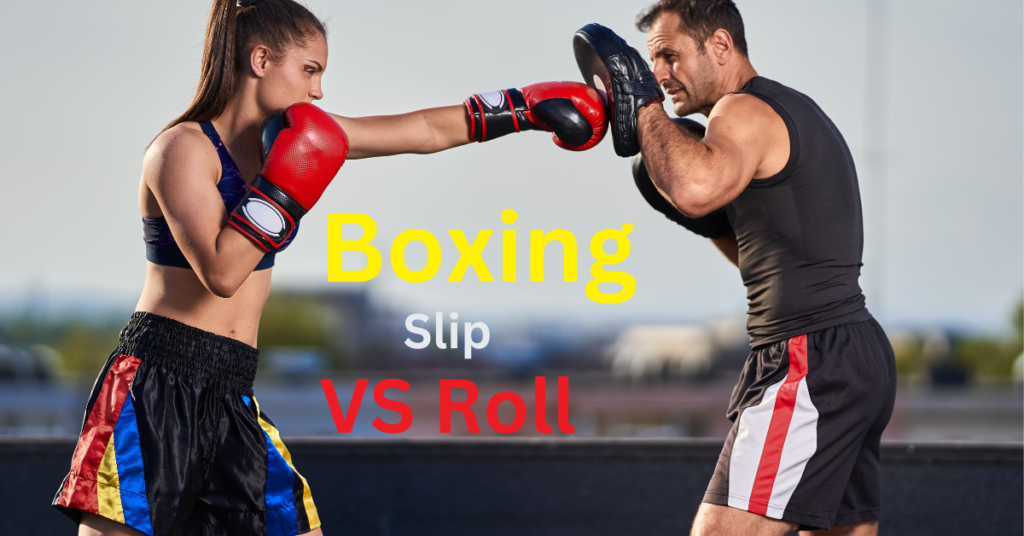Boxing is an integral part of many athletes’ training regimens. It’s a demanding sport that requires strength, speed, and agility. But the most important factor in becoming a successful boxer is mastering the fundamentals of boxing technique. The two main techniques used in boxing are slipping and rolling, which allow boxers to move quickly and protect themselves from their opponents’ punches. In this article, we’ll look at the differences between slip and roll boxing techniques as well as how they can be used to your advantage.
Slipping and rolling are two different defensive tactics that boxers use to avoid getting hit by their opponents’ punches. Slipping involves moving your head quickly out of the way of an incoming punch, while rolling involves deflecting the punch with your arm or shoulder. Both techniques require quick reflexes, as well as good timing and positioning. They also require a good understanding of footwork so you can move away from your opponent’s punches effectively.
No matter what level boxer you are, mastering both the slip and roll techniques is essential for success in the ring. Learning how to properly use these skills can help you stay one step ahead of your opponent while staying safe from getting hit too hard or too often. In this article, we’ll discuss why it’s important to learn both techniques as well as provide tips on how to master them both.
Definition Of Boxing Techniques
Wrapping an item for shipment is a delicate art, requiring both precision and care. The two most popular techniques used to expertly package and protect items are boxing slip and roll. These tried-and-true methods ensure that goods arrive safely to their destination.
Boxing slip involves the use of corrugated cardboard sheets that have been pre-cut into four flaps which fold inwards, forming a rectangular box. The box is then sealed with tape or glue for extra protection. This method of boxing ensures all sides of the item are fully covered and secured against impact or mishandling during shipping.
Roll technique utilizes a single piece of corrugated cardboard that is shaped into a tube with one end open, after being cut into two pieces lengthwise. This tube is then placed around the item before being secured with tape or glue. This technique allows for greater flexibility when it comes to the size and shape of the item being shipped, as well as providing more cushioning against impacts during transit.
The differences between slip and roll techniques will be explored further in the following section.
Differences Between Slip And Roll Techniques
Slip and roll are two common boxing techniques. While they are both essential to a fighter’s success, they differ in their approaches and applications. The slip technique is more defensive, while the roll technique is more offensive.
The slip technique involves dodging an oncoming punch by moving quickly out of its way at the last minute. This is done with a sideways movement of the head and upper body, allowing for the punch to be avoided entirely. It requires good reflexes, timing and agility.
The roll technique involves ducking under or around an oncoming punch before coming back up with a counter-punch or combination of punches from another angle. This requires greater strength and power as well as better coordination than the slip technique does.
Both techniques have their place in boxing, but each has different advantages that must be considered when choosing which one to use in any given situation.
Advantages Of Slip Technique
The slip technique is a great way to ensure that the box is secured properly and quickly. On the other hand, the roll technique takes more time and can be quite tricky to get right. One of the main advantages of using the slip technique is that it does not require any tape or glue to secure the box. This makes it much easier to open and close boxes without having to worry about sticky residue being left behind. Additionally, using this method also eliminates any risk of tearing or damaging the box while trying to open it.
The slip technique also ensures that all sides of the box are tightly held together, making sure that nothing falls out during shipping. Furthermore, this method is beneficial for large boxes since it requires less effort and manpower in comparison to other techniques. This means that it can save time and money when packing multiple items into larger containers.
Lastly, the slip technique has been proven to be one of the most reliable methods for securing boxes as it guarantees a secure fit throughout transit. This makes it ideal for fragile objects since there won’t be any gaps between each side of the box which could lead to potential breakages en route.
Advantages Of Roll Technique
The roll technique for boxing has a number of advantages over the slip technique. It allows for increased mobility and agility, as you can move around the ring with greater ease and speed. This is especially helpful when you’re looking to take advantage of an opponent’s weaknesses, as it gives you more room to maneuver. Additionally, the roll technique also allows for more power in your punches, since you can generate more force from a rolling motion than from a slip. Finally, this method also helps protect your body from impact damage by absorbing some of the shock on contact with an opponent’s punches. This can help minimize injury and fatigue while still allowing you to deliver powerful blows. With these advantages in mind, it’s clear why the roll technique is a popular choice among boxers.
When To Use Each Technique
It’s understandable to be unsure of when to use a boxing slip compared to a roll. Many people believe that if you can do one, you can do the other. This is not necessarily true; each technique has its advantages and disadvantages depending on the situation.
Boxing slips are useful when you need to quickly avoid an incoming punch with minimal movement. This technique requires very little body movement and can be used from any stance or angle. Although it is effective, it does require precise timing and sharp reflexes because you must anticipate the opponent’s attack before it even starts.
Rolls are much more complex than slips and require more mobility as well as physical strength and endurance. This technique takes longer to perform than a slip, but it is also much more effective in terms of energy efficiency and defensive protection against multiple punches coming from different angles.
These techniques have their own unique uses in the ring, so it is important to understand when they should be applied in order to maximize their effectiveness. From here we can move onto how best to practice these techniques for optimal results when sparring or competing in a match.
Practicing The Techniques
Now that you know when to use each technique, it’s time to get started with practicing the techniques. Here are a few tips for maximizing your performance:
- Start with 3-minute rounds and work your way up as you get used to the different techniques.
- Focus on proper form before increasing speed or intensity.
- Work through a series of combinations to develop hand-eye coordination and reaction time.
- Use a punching bag or speed bag to practice slipping punches and rolls.
Developing muscle memory is essential for success in boxing, so be sure to practice regularly and consistently over time. With consistent dedication, you’ll be able to hone in on the skills necessary for becoming an excellent boxer. The key is to stay focused on mastering the basics before moving on to more advanced drills and techniques. With daily practice, you can make progress towards reaching your boxing goals quickly and efficiently!
Maximizing Your Performance
Boxing slip and roll are two important techniques in boxing that can help you maximize your performance. The slip is a defensive move that involves leaning back or to the side, while keeping your feet firmly planted on the ground. This technique allows you to avoid punches while also maintaining your balance and positioning. On the other hand, the roll is an offensive technique that involves rolling forward or backward to close the distance between you and your opponent. This helps you gain momentum for counter punches, as well as create space for yourself when needed.
Both techniques require practice and timing in order to be effective in a fight. To master them, it’s important to practice with a partner as well as on a heavy bag or speed bag. When practicing with a partner, focus on honing your reflexes through shadowboxing and sparring drills. When working on the heavy bag or speed bag, focus on improving your technique by practicing variations of both the slip and roll.
By mastering these two techniques, you will become more agile in the ring and be able to respond quickly to whatever situation arises during a fight. You’ll also be able to read your opponent better so that you can outmaneuver them at any given moment. With regular practice you’ll be able to maximize your performance inside the ring and stand out from other boxers.
Conclusion
In conclusion, boxing slip and roll techniques are both important for a successful fight. With the slip technique, boxers can avoid punches and move quickly around their opponents; with the roll technique, they can keep their opponent from scoring points and stay in control of the fight. Practicing both techniques is essential to becoming a better boxer.
Statistics show that elite-level boxers have an average of 300 hours each year dedicated to training slip and roll techniques. That’s over 10 hours per week! This demonstrates how important it is to master these skills in order to reach the highest levels of success.
If you want to become a great boxer, it’s essential that you take the time to practice your slip and roll techniques regularly. With dedication, I’m sure you’ll be able to master them both and perform at your best when it matters most.




